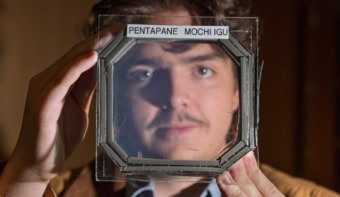
Researchers at the Massachusetts Institute of Technology have fabricated the first synthetic photovoltaic cell capable of repairing itself. The cell mimics the self-repair system naturally found in plants, which capture sunlight and convert it into energy during photosynthesis. The device could be 40% efficient at converting solar power into energy – a value that is two times better than the best commercial photovoltaic cells on the market today.
During photosynthesis, plants harness solar radiation and convert it into energy. Scientists have been trying to mimic this process in synthetic materials, but this has proved difficult because the Sun’s rays damage and gradually destroy solar-cell components over time. Naturally occurring plants have developed a highly elaborate self-repair mechanism to overcome this problem that involves constantly breaking down and reassembling photodamaged light-harvesting proteins. The process ensures that these molecules are continually being refreshed, and so always work like “new”.
Michael Strano and colleagues have now succeeded in mimicking this process for the first time by creating self-assembling complexes that convert light into electricity. The complexes can be repeatedly broken down and reassembled by simply adding a surfactant (a solution of soap molecules). The researchers found that they can indefinitely cycle between assembled and disassembled states by adding and removing the surfactant, but the complexes are only photoactive in the assembled state.
Light reaction centre
The complexes are made up of light-harvesting proteins, single-walled nanotubes and disc-shaped lipids. The proteins (which are isolated from a purple bacterium, Rhodobacter sphaeroides) contain a light reaction centre (carried by the lipids) comprising bacteriochlorophylls and other molecules. When the centre is exposed to solar radiation, it converts the sunlight into electron-hole pairs (excitons).
The excitons then shuttle across the reaction centre and subsequently separate back out again into electrons and holes. The nanotubes – which act as wires – channel the electrons, so producing a current. The nanotubes also serve to align the lipid discs in neat rows, ensuring that the reaction centres are uniformly exposed to sunlight.
“The beauty of this system is that a jumbled solution of components can spontaneously arrange itself into highly organized structures, containing thousands of molecules in a specific arrangement, by simply removing the surfactant,” team member Ardemis Boghossian explained.
Apples and oranges
“Using the regeneration process, we are able to prolong the lifetime of our solar cell indefinitely, increasing our efficiencies by more than 300% over 164 hours of continuous illumination compared to a non-regenerated cell,” added Boghossian. “If we were to increase the concentration of these complexes to make a completely stacked, highly packed formation, we could approach the theoretical limit of 40% – which is well beyond the efficiencies we see in commercial solar cells on the market today.”
Comparing the MIT complexes to existing solar cells is like “comparing apples to oranges” though, she insists. “Most solar cells are static because they are made of solid slabs of silicon or thin films. Our solar cells are dynamic, just like plant leaves that can recycle their proteins as often as every 45 minutes on a really sunny day.”
“We’re basically imitating tricks that nature has discovered over millions of years – in particular ‘reversibility’, the ability to break apart and reassemble,” added Strano.
The work was reported in Nature Chemistry.



